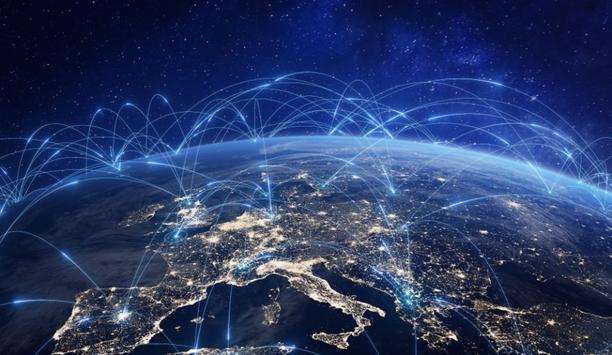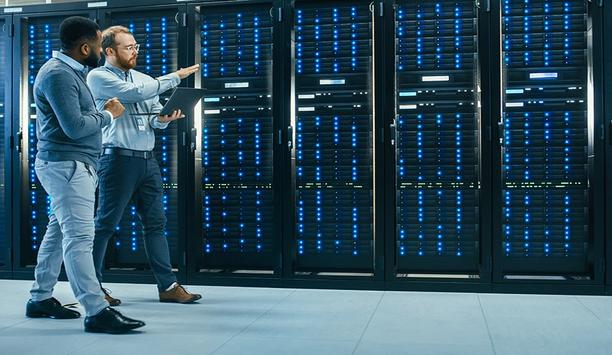The use of artificial intelligence (AI) in tandem with biometric access control systems is rapidly becoming a popular mode among customers in the ever-changing physical security market. Solutions that can learn, evaluate, and offer quick and precise responses are essential as modern security concerns become more and more sophisticated.
Biometric uses for AI are range from faster, more accurate fingerprint analysis to more flexible, three-dimensional facial recognition. Offering an example, JJ Kim, overseas sales manager at KJ Tech, suggested that AI-powered face recognition solutions can identify people even when they undergo changes like plastic surgery or grow facial hair.
Spotting anomalous behaviour
Speaking on a similar note, Suprema’s head of the R&D centre, Seongbin Choi, emphasised AI's ability to lighten the load of human surveillance by rapidly processing video material, identifying individuals or vehicles, and spotting anomalous behaviour.
Integrating AI and biometrics leads to improved security that can better react to new situations
These assertions indicate a paradigm shift in how physical security is perceived. Integrating AI and biometrics leads to improved security that can better react to new situations. Understanding the capabilities and consequences of AI in biometrics is more than just a trend for physical security professionals looking to remain ahead of the curve - it's a crucial aspect of the future of security management. This article examines the specifics of AI's function in biometric access control and its current and future uses and developments.
Face recognition technology
Recent years have seen remarkable development in face recognition technology, with state-of-the-art AI-driven systems taking the lead. Professionals in the field of physical security are now looking to these innovations to help them meet the ever-growing complexity of modern security threats. KJ TECH is one company that is helping to shed light on this transformation, but the business world as a whole is quickly coming around to the revolutionary possibilities of AI.
“Currently, AI features are included in KJ TECH face readers such as FE-400 & 600 series,” explained Kim. “This means that when a user enrols their face, the AI face reader studies the user's face in three dimensions, allowing it to recognise the face even if there has been plastic surgery or if the user has grown a beard. The face reader can also recognise the face without any issue, even when the user is wearing a face mask.”
Dynamic security strategy
The ability of AI to analyse a face in three dimensions represents more than a mere technological advance
Recognising and learning from three-dimensional faces - The ability of AI to analyse a face in three dimensions represents more than a mere technological advance - it also provides a workable answer in various real-world contexts. AI-driven face readers may learn and adapt to new situations, such as reading a person’s face even if they have made deliberate attempts to disguise themselves. This adaptability to user appearance is indicative of a dynamic security strategy.
Face-mask functionality - Recognising a person's identity while hiding it behind a mask is crucial in today's environment. Artificial intelligence algorithms are tackling the problem of maintaining secure and seamless access control.
Incorporating artificial intelligence
Chip with built-in algorithms - Incorporating an algorithm chip within the face reader is yet another innovation. This trend toward integrating hardware and software to create more robust and responsive solutions indicates a new direction for the industry.
Growing prospects in the market - There is a growing demand for these cutting-edge facial recognition systems in several parts of the world. Kim mentions regions like the Middle East and other emerging markets in particular. This pattern represents increased interest in and use of biometric solutions that incorporate artificial intelligence.
It is not enough for those working in physical security to simply keep up with these changes
The rapid development of facial recognition technology is indicative of a rapidly evolving business sector. It is not enough for those working in physical security to simply keep up with these changes - they must also be able to foresee their potential consequences. Incorporating AI into facial recognition systems is redefining what is feasible in physical security, opening up new frontiers in areas like three-dimensional recognition and mask compatibility.
Efficiency in fingerprint and facial authentication
With AI, biometric authentication, including fingerprint and facial recognition, has made a technical leap. Modern technologies' precision, speed, and capacities push the boundaries of what is possible, demonstrating a transformational effect on security solutions.
Biometric analysis with unprecedented detail and speed - AI's involvement in fingerprint and facial verification has enabled the detection of previously undetected minute deviations. AI gives accuracy and reactivity that exceeds human capabilities by evaluating intricate patterns in a fraction of a second. This means more dependable and timely access control for physical security personnel.
“AI has significantly advanced fingerprint and facial authentication technology. AI can analyse biometric data with unprecedented detail and speed, surpassing human capabilities,” Choi pointed out. “For instance, it can identify minute differences in facial structure or fingerprints within a fraction of a second.”
Evaluating video material
Video surveillance has long been seen as an essential component of physical security
Video surveillance and analysis efficiency - Video surveillance has long been seen as an essential component of physical security. AI has transformed the technique of monitoring and evaluating video material. As industry leaders such as Seongbin Choi have remarked, AI can scan hundreds of hours of film in seconds, relieving human security workers of the time-consuming duty of manual monitoring.
“AI provides efficiency in monitoring and analysing video footage, capable of processing hundreds of hours of video in mere seconds. This relieves human security personnel from the burden of manual monitoring,” Choi added.
Enabling targeted reactions
Capabilities for identification and detection - Beyond simple recognition, AI-powered systems can identify specific individuals, vehicles, or even odd occurrences like violent conduct or loitering. This adds an information layer to security mechanisms, enabling targeted reactions and proactive management.
“AI-based surveillance software can distinguish between different videos, enabling the identification of specific individuals or vehicles, and it can detect unusual or undesirable occurrences, such as violent behaviour or loitering, through video analysis,” said Choi.
Constantly evolving industry
A driving force for broader security solutions - Combining AI plus facial and fingerprint identification isn't simply a small step forward. This paradigm shift will result in more robust, efficient, and flexible security systems. These improvements give a new toolset for addressing complicated challenges in industries where security is critical.
Fingerprint and facial authentication technology developments represent more than just technological progress
Fingerprint and facial authentication technology developments represent more than just technological progress. They herald a new age in physical security. By embracing AI capabilities, security professionals arm themselves with technologies that are not only more powerful but also more intelligent and adaptive.
Suprema’s and other industry experts' thoughts highlight a road that is redefining security benchmarks, providing a glimpse into the future of a constantly evolving industry.
Anticipating potential threats
Biometric access control systems that incorporate artificial intelligence are driving a revolution in physical security. Three-dimensional facial recognition, fingerprint analysis with unparalleled precision, and the effectiveness of video surveillance are not isolated examples but rather indicators of a bigger shift in the business as a whole.
KJ TECH and Suprema’s perspectives are representative of this movement toward smarter, more adaptable security measures that address actual threats. Artificial intelligence is ushering in a new era of security that is responsive to change and anticipates potential threats.
Understanding and adopting these innovations is not an option for those who work in the sector of physical security but rather a must. Emerging technologies are shaping the security landscape of the future, which is as intricate and nuanced as the threats it is meant to combat. The future holds the possibility of not only improved security but also a rethinking of what it means to be secure in a world where technology is continuously reshaping society.







